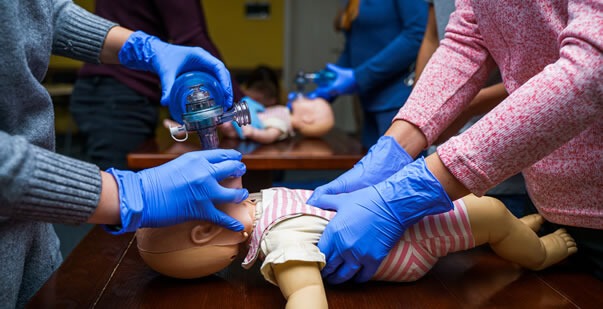
Updated on: May 6, 2024
Did you know that the human heart, which in itself is an awesome pump of blood, beats approximately one hundred thousand times a day! Throughout life, the heart relentlessly goes through this routine as it dances in a pattern that embodies the tenacity of the human cardiovascular system. PALS training is an important step for healthcare practitioners which provides them with the necessary competence to deal with emergency pediatric conditions. Following the increasing value PALS certification assumes in society, learners have different approaches they can adopt while studying the PALS certification program—Blended Training and Classroom Training. Learn more about PALS course options and their impact on pediatric emergency response.
PALS has evolved into an array of learning options catering to distinct training needs. The diverse choices make it possible for healthcare providers to become familiar with lifesaving procedures in pediatric emergencies. Discover the three distinct formats available for PALS online courses:
1. Traditional classroom training: Traditional classroom training involves instructor-led sessions honing practical skills and facilitating immediate feedback. It promotes an environment of interaction for healthcare professionals to hone their skills in saving lives among children.
2. Blended learning: Blended learning integrates seamlessly online modules to pursue on their own time. It also includes in-person sessions to offer a more hands-on experience. It also maintains a fine balance between theory and practical training. PALS blended renewal is a recertification program comprising a blend of online learning with in-person skill sessions.
3. Online PALS course: These allow for self-learning, providing theoretical information in an easily accessible form for healthcare providers. PALS online certification framework works well with a student who has many duties that can interfere with their learning process.
A new approach toward education about pediatric advanced life support is blended learning heartcode PALS. The health professionals first engage in online modules wherein they learn about vital PALS topics, such as how to examine a young individual during an emergency and utilize life-saving medicines. They then engage in face-to-face sessions where they practice by going through simulated issues. The integration of both computer and hands-on instruction enables health care workers to grasp key skills applicable in the instance of a pediatric emergency.
Classroom PALS course online is a typical training mode where clinical practitioners undergo instructor-based courses of significant expertise applied when dealing with emergencies in pediatrics. Here, you can undertake practical learning to build competence in lifesaving skills. The instructor leads you through vital items such as systematic evaluation, advanced-life support techniques, and drugs in pediatrics. Classroom PALS is a supportive learning platform where healthcare providers acquire skills on handling crisis cases of children.
When it comes to Pediatric Advanced Life Support (PALS) training, healthcare professionals can choose between two primary course options: blended learning and classroom PALS. These options have their own benefits with regard to different approaches to learning. Read the table below for detailed understanding of the differences:
Read more: https://palscertification.com/importance-of-pals-and-who-should-take-up-pals-course/
Choosing the ideal kind of PALS online training depends on the preferences and priorities of the healthcare professional. Blended learning combines online convenience with in-class practicality for maximum flexibility and skill competence. However, classroom training involves a classical approach whereby it involves face-to-face interaction that leads to the provision of prompt responses. Both alternatives have a high level of pediatric emergency response as practitioners select a method suitable for their own learning style or needs. Choose among your preferred PALS course options to receive online PALS certification and then perform PALS renewal online to ensure continuous practice.